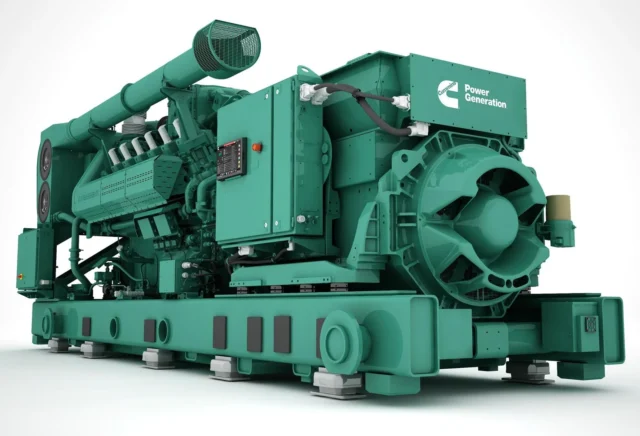Introduction
In modern power systems, protecting generators from electrical faults while ensuring stability during transient conditions is critical. One such protection method, Voltage Restrained Overcurrent Protection (51/27G), plays a crucial role in maintaining reliability. This article explores its working principle, applications, and an example of its implementation in a generator protection scheme.
The Concept of Voltage Restrained Overcurrent Protection
Traditional overcurrent relays (51) operate based on preset current thresholds. However, in scenarios where system voltage drops significantly—such as during a fault or loss of excitation—fault currents may also decrease. A fixed overcurrent setting might not detect these conditions effectively. This is where voltage restrained overcurrent protection becomes valuable.
How It Works:
- The overcurrent relay (51) is influenced by an undervoltage relay (27G).
- Under normal voltage conditions, the overcurrent relay operates with a higher pickup threshold.
- When voltage drops below predefined levels, the pickup current is reduced accordingly.
- This adaptive setting ensures that faults are still detected even when system voltage is low.
Applications of Voltage Restrained Overcurrent Protection
- Generator Protection:
- Detects faults within the generator stator winding.
- Prevents misoperation under normal transient conditions.
- Ensures adequate fault detection even at reduced generator voltage levels.
- Power Plant Applications:
- Used in thermal, hydro, and nuclear power stations to provide backup protection.
- Helps in system stability by ensuring proper coordination with other relays.
- Motor Protection (Large Motors):
- Protects large motors that experience voltage sags during startup.
- Ensures motors are not exposed to prolonged undervoltage conditions leading to damage.
- Distribution Systems:
- Aids in better coordination with downstream protection elements.
- Ensures selective fault clearing under varying system voltage conditions.
Applicable Standards
Several standards govern the implementation of Voltage Restrained Overcurrent Protection:
- IEEE C37.102 – Guide for AC Generator Protection.
- IEEE C37.91 – Guide for Protecting Power Transformers.
- IEC 60255-151 – Functional requirements for overcurrent relays.
- ANSI/IEEE Device Numbers – Defines 51 as an overcurrent relay and 27 as an undervoltage relay.
Practical Example
To better understand how voltage restrained overcurrent protection functions, let’s consider the following case study:
System Data
- Generator Rating: 50 MVA, 13.8 kV, 60 Hz
- CT Ratio: 2000/5 A
- Full Load Current (Primary): 2092 A
- Full Load Current (Secondary, scaled by CT): 5.23 A
- Voltage Transformer (VT) Ratio: 13.8 kV / 120 V
Protection Scheme & Relay Settings
The relay settings are dynamically adjusted based on system voltage:
- At Nominal Voltage (100%) → Pickup current = 7 A (130% of full load current)
- At 80% Voltage → Pickup current = 5 A (95% of full load current)
- At 50% Voltage → Pickup current = 3 A (57% of full load current)
| Voltage Level (% of Nominal) | Overcurrent Pickup (Secondary) |
|---|---|
| 100% (Nominal: 120V VT Sec) | 7.0 A |
| 80% (96V VT Secondary) | 5.0 A |
| 50% (60V VT Secondary) | 3.0 A |
These settings ensure that the relay becomes more sensitive to lower fault currents when voltage drops, improving fault detection and system protection.
Relay Coordination Considerations
- Time Dial Setting (TDS): Adjusted to ensure coordination with downstream protective devices.
- Definite Time Delay (if needed): Ensures selective tripping.
- Directional Element (if applicable): Prevents false trips by detecting power flow direction.
Manufacturer Specific Relays
Voltage Restrained Overcurrent Protection (51/27G) relays are specialized devices that adjust their overcurrent pickup settings based on system voltage levels, enhancing protection for generators and other electrical equipment during varying voltage conditions. Several manufacturers offer such relays:
1. General Electric (GE): GE has produced various voltage-restrained overcurrent relays, including models like the 12IJCV51 series. For instance, the 12IJCV51B22A is an overcurrent relay with voltage restraint designed for 120V systems.
2. ABB: ABB offers a range of protection relays, though specific models with voltage restraint features are not detailed in the available sources. Their REU615 relay provides voltage and frequency protection and control, suitable for utility and industrial power distribution systems.
3. Siemens: Siemens provides the Reyrolle 7SR46 Argus, a CT-powered overcurrent protection relay with auxiliary power supply, offering both definite-time and inverse-time overcurrent and earth-fault protection functions.
When selecting a relay, it's essential to consult the manufacturer's specifications to ensure compatibility with your system's requirements.
Conclusion
Voltage Restrained Overcurrent Protection (51/27G) is a crucial protection strategy for generators, large motors, and power distribution systems. By dynamically adjusting the overcurrent pickup level based on voltage conditions, it ensures reliable fault detection even under reduced voltage levels. Adhering to industry standards and setting proper relay coordination enhances system stability and protection.
By implementing these principles in practical power system applications, engineers can achieve both security and reliability, ensuring that electrical infrastructure remains protected against unforeseen faults and disturbances.
